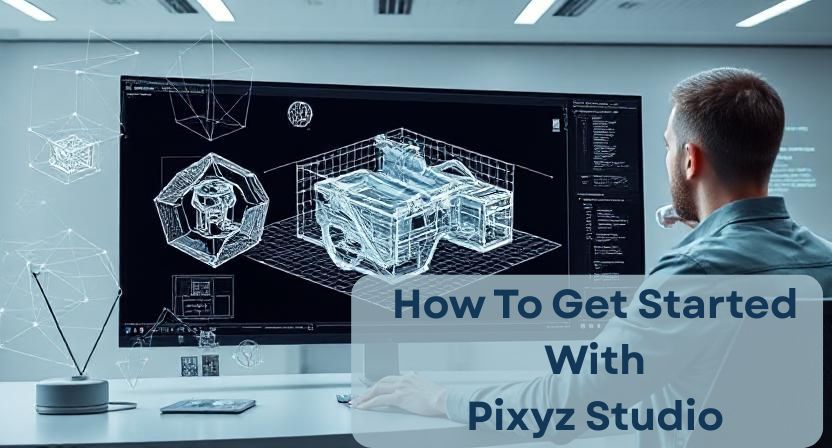Working with complex 3D data often means juggling large files, long import times, and messy conversions. Pixyz Studio is built to make that process faster, smoother, and smarter—especially for engineers, designers, and developers who need clean, optimized 3D models for real-time applications or digital twin projects.
If you’re new to Pixyz Studio, this guide will help you get up and running efficiently.
What is Pixyz Studio?
Pixyz Studio is a powerful 3D data preparation and optimization tool. It’s especially popular in industries like automotive, aerospace, architecture, and manufacturing. The software supports importing large CAD and mesh files from nearly any source and converting them into lightweight, real-time-ready assets for engines like Unity or Unreal.
It’s the go-to solution when you need to:
- Reduce file size without losing visual fidelity.
- Convert heavy CAD files into optimized meshes.
- Automate repetitive cleanup and optimization tasks.
Step 1: Install Pixyz Studio
- Visit the Pixyz website and download the latest version of Pixyz Studio.
- Register for a license—either a trial or a commercial one.
- Follow the installation wizard and launch the application once it’s complete.
Note: Ensure your system meets the minimum GPU and RAM requirements for smooth operation.
Step 2: Import Your 3D Data
Once inside Pixyz Studio:
- Click on File > Import.
- Choose from dozens of supported file formats like STEP, IGES, CATIA, JT, FBX, OBJ, and more.
- Use the import settings to define units, coordinate systems, and tessellation options.
Pixyz Studio excels at handling large CAD assemblies—what might crash other programs loads surprisingly fast here.
Step 3: Explore the Interface
The UI may feel overwhelming at first, but it’s logically structured:
- Scene Tree: View and manage the hierarchy of imported parts.
- Viewport: Navigate and inspect the 3D model.
- Properties Panel: See metadata, materials, and part properties.
- Toolbars: Access commonly used operations like decimation, merge, repair, and retopology.
Spend a few minutes exploring. The interface is highly customizable to match your workflow.
Step 4: Clean and Optimize the Model
Here’s where Pixyz Studio really shines. Use the toolbox to:
- Decimate: Reduce polygon count while maintaining shape.
- Unify Normals: Ensure consistency across surfaces.
- Repair Geometry: Fix holes, non-manifold edges, and other mesh issues.
- Retopologize: Generate clean quad meshes for animation or simulation.
- Merge Parts: Simplify complex hierarchies for real-time engines.
You can apply these steps manually or automate them with Python scripts inside Pixyz.
Step 5: Export for Your Target Platform
After cleaning and optimizing:
- Go to File > Export.
- Choose a format like FBX, glTF, USD, or OBJ depending on your target engine or platform.
- Use the export settings to adjust coordinate systems, units, and LODs (Levels of Detail).
This final step prepares your model for use in game engines, simulations, or AR/VR projects.
Use Automation to Save Time
Pixyz Studio supports Python scripting, so if you find yourself repeating the same optimization steps, write a script to do it in one click. This is particularly useful for batch processing multiple files or integrating Pixyz into a larger digitalization pipeline.
Final Thoughts
Getting started with Pixyz Studio is straightforward once you know where everything lives. With its support for massive CAD files, advanced optimization tools, and automation capabilities, it’s an essential tool for any engineer or 3D content creator looking to simplify and speed up 3D workflows.
Whether you’re working on product visualization, digital twins, or real-time simulations, Pixyz Studio helps you bridge the gap between design and experience—cleanly, quickly, and efficiently.

